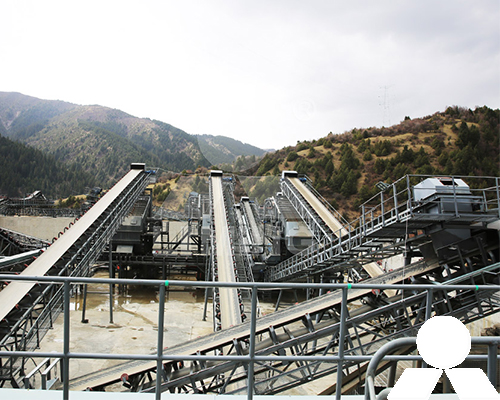Cone and Gyratory Crusher in Mines and Quarries
Cone and gyratory crusher are two essential pieces of equipment used in the mining and quarrying industries to reduce the size of rocks and minerals. While they share the common goal of breaking down large materials into smaller, more manageable pieces, they differ in their design, operation, and applications.

Cone Crusher
Cone crusher, also known as cone reduction crusher, are characterized by their cone-shaped crushing chamber and an eccentrically moving crushing element. This movement creates a shearing and compression force that breaks down the material as it passes through the narrowing gap between the crushing element and the stationary liner. Cone crusher are typically employed in secondary or tertiary crushing stages, where the feed material has already been pre-crushed to a smaller size. They are known for their ability to produce a more uniform product size and their versatility in handling a wide range of materials, including hard rocks, ores, and aggregates.
Gyratory Crusher
Gyratory crusher, on the other hand, are designed for primary crushing, where large rocks are initially reduced to a smaller size. They feature a conical crushing head that rotates eccentrically within a stationary concave bowl. This eccentric motion forces the material between the head and the bowl, causing it to break down under compression. Gyratory crusher are known for their large feed capacity and ability to handle very hard and abrasive materials.
Key Differences
The main differences between cone and gyratory crusher lie in their size, capacity, and application:
- Size: Gyratory crusher are generally larger than cone crusher and can handle larger feed sizes.
- Capacity: Gyratory crusher typically have a higher throughput capacity than cone crusher, making them suitable for high-volume operations.
- Application: Gyratory crusher are primarily used for primary crushing, while cone crusher are more commonly employed in secondary and tertiary crushing stages.
The selection of a cone or gyratory crusher depends on the specific requirements of the mining or quarrying operation. Factors to consider include the size of the feed material, the desired product size, the desired throughput capacity, and the type of material being processed.
In summary, cone and gyratory crusher play crucial roles in the mining and quarrying industries, transforming large rocks and minerals into smaller, usable products. Their unique designs and capabilities make them well-suited for different stages of the crushing process, ensuring efficient and effective size reduction.








